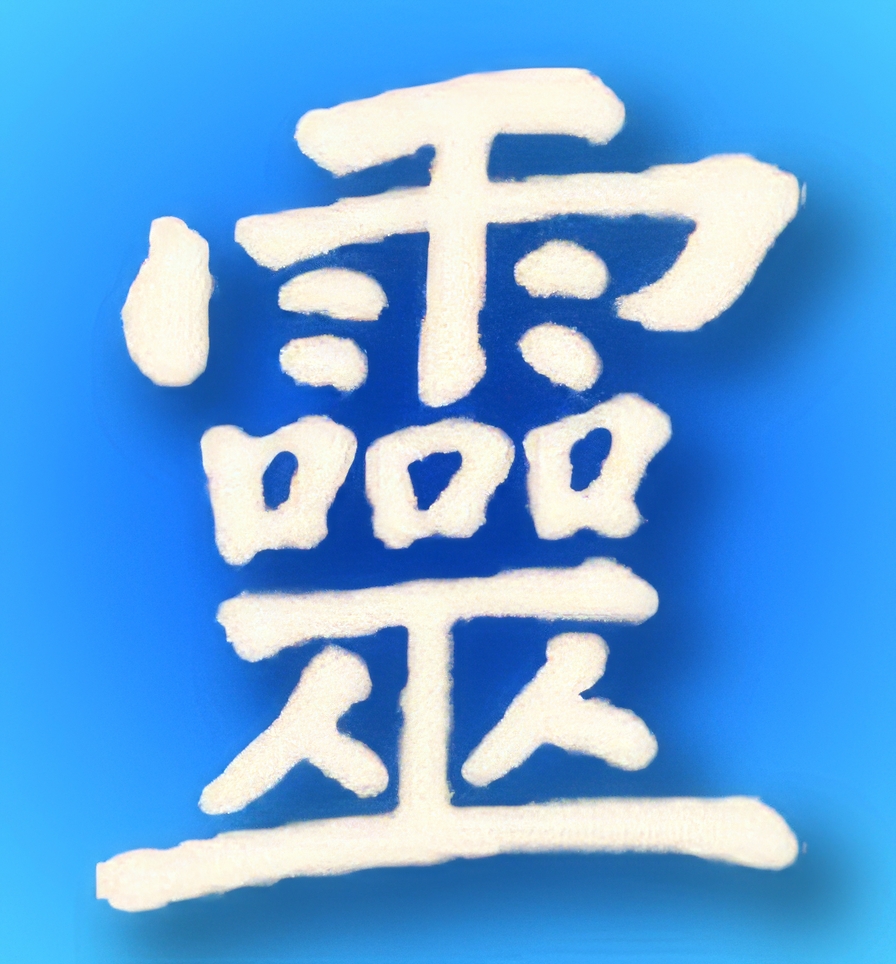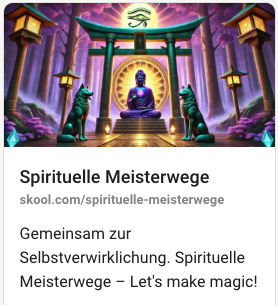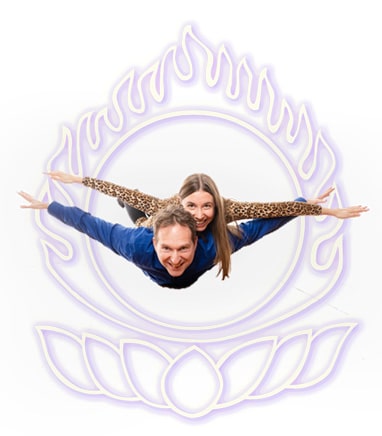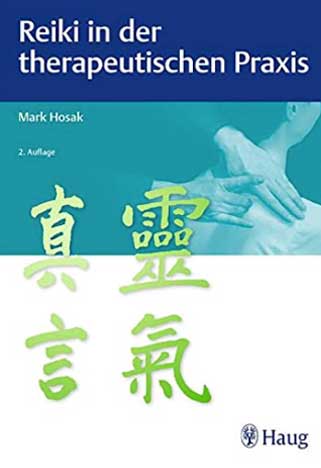The Japanese Mikao Usui is considered the founder of the Reiki healing method. He was a Buddhist monk and born samurai who discovered the spiritual life energy called Reiki in 1922 during ascetic practices and meditations in the Kurama Mountains. (The area is not a mountain Kurama but a whole mountain range in the north of Kyoto)
Usui believed that anyone could learn to use the Reiki power for personal growth and healing, and began training it. He developed a system of spiritual exercises with symbols, mantras and treatment positions, which today form the basis of Reiki practice for laying on of hands (Usui Teate). Usui taught Reiki far and wide in Japan. Even after he died in 1926, his trainings have been passed down through the generations worldwide and continue to enjoy high popularity today. To give people access to his healing system through a wide dissemination is his greatest heartfelt wish, which all Reiki practitioners and masters realize for the benefit of all.
Studies support the experience that Reiki can reduce stress, promote relaxation, improve mood and increase overall well-being. Basically, Reiki promotes the activation of one’s own powers for self-healing. During a Reiki treatment, the user gently places his hands or holds them in the aura with some distance from the body.
The Master’s legacy lives on through his trainings and example of courage and confidence in the face of any challenge. His story is an inspiration for all of us to never give up hope, no matter what challenges we face in our lives. We can learn from him that with determination and faith we can overcome any obstacle and achieve anything we set out to do.
He was known for his compassion, kindness and generosity. He taught the importance of moral values, self-discipline, humility and respect for all living things. He also inspired people to live an honest and simple life. His trainings were so influential that they are still relevant today.
How do we know anything about Mikao Usui?
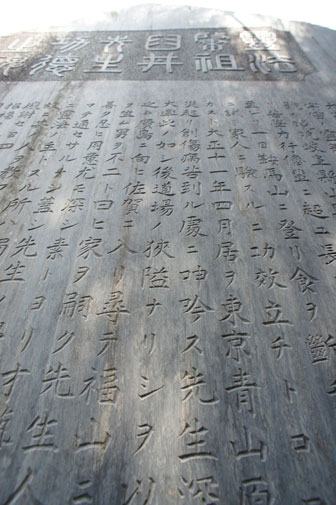
There are only a few historical records with reliable biographical data about his life. In addition, there are some oral narratives and among them misleading stories and legends.
We get more information from the cultural developments in his lifetime. Japan was just leaving centuries of self-imposed isolation from the rest of the world, experiencing a cultural flowering and making strides to become technologically comparable to the West.
A particularly important but often overlooked source about him is the Reiki symbols, initiations, attunements and Reiki practices.
These contents were unknown as sources in the West for a long time, because the Reiki Master Hawayo Takata, trained by Usui’s master student Dr. Chujiro Hayashi, as well as her successor Phyllis Lei Furumoto, as well as the Reiki Alliance, founded by her, were hardly mentioned and were even partly concealed.
In this context, it is worth mentioning the commitment of Frank Arjava Petter, who rediscovered the ancient texts in the 90s of the last century and made them accessible in Western languages as best he could with his possibilities.
As a doctor of Japanese studies and art historian of East Asia with a focus on Buddhism, I have translated these texts from scratch and have been able to bring to light some previously unknown facts.
The following information about Mikao Usui’s his personality, life and Usui system is based on the few written sources in the context of developments in Japan.
The inscription on the memorial stone of Mikao Usui
Probably the most detailed source about Usui’s life and work, is the inscription on the memorial stone at his grave by his Reiki students from 1927 at the cemetery of Saihoji Temple in Tokyo, Toyotama District.
The inscription is there to honor the master and carve his message in stone. Therefore, his students also call him Master Usui Sensei.
This monument was to immortalize their achievements through an inscription of Buddhist words.
At the same time, the inscription is written in the words of a sacred text such as a Buddhist sutra. This means that much in it has a deeper meaning. In addition, there are cultural gimmicks and quite a few references to historical and cultural contexts. From this perspective, much more can be said about Mikao Usui than a single translation of the inscription. We will now go into this content.
The fact that so many warriors were studying and receiving instruction from a master in those days led to the erection of a memorial stone in the Saihôji cemetery in Toyotama District with the intention that these merits should be written in imperishable verse by means of a Buddhist text.
Author of the Japanese text of literature Professor Okada Masayuki – Order of Merit of the Lower 3rd Rank 3rd Class.
Calligraphy – Ushida Juzaburo – Rear admiral of the lower 4th Rank, 3. level of merit of the 4th grade
Basics of the Reiki healing method
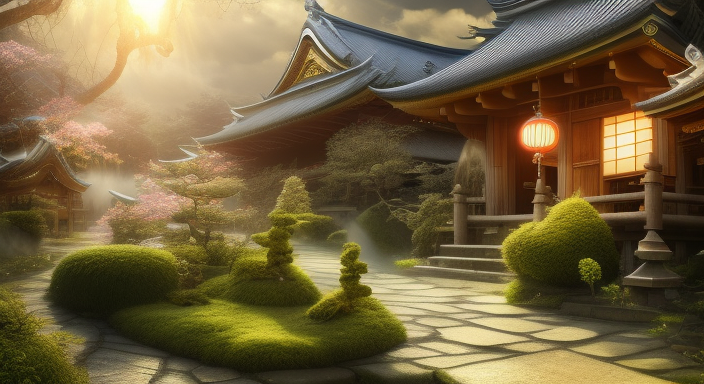
Another important source is a compilation of texts by Mikao Usui with the „Fundamentals of the Reiki Healing Method“ (Japanese: Usui-Reiki Hikkei 霊気療法必携). This text consists of four independent parts. From the first two parts about the precepts and the interview with Mikao Usui about Reiki, some information about Usui’s life and the Reiki healing method can be seen. The treatment guidelines, on the other hand, are a listing of Western and Eastern medical knowledge during Usui’s lifetime. Dr. Usui himself was not a medical doctor and did not have a doctorate. Dr. Usui’s title came about because in Japan the master’s level is equated with the doctor.
The imperial poems of the Meiji-Tenno give clues to a Japanese form of reviewing because an effect is named for each poem. An explanation about the application of the poems is not given here but in a manual about the Reiki healing method from the Usui Reiki Ryoho Gakkai.
Contents in Usui Reiki Hikkei:
the Usui Precepts
an interview where Usui answers questions about Reiki in detail
Treatment guidelines for diseases
Imperial Poems of the Meiji Tennis
Reiki manual about the healing method
The third major written source is the manual on the Reiki healing method (Japanese: Reiki ryôhô no shiori 霊気療法のしおり), which was published by the Lodge founded by Usui in 1974. In it you can read about Mikao Usui’s training as a spiritual path and about the application of the method.
Who is Mikao Usui (1865-1926)
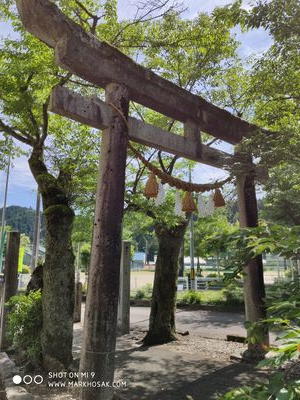
Mikao Usui saw the light of day on August 15, 1865 in the Japanese village of Taniai in Gifu Prefecture. His first name is Mikao and his family name is Usui. His mother’s last name is Kawai. The posthumous name of the father is Taneuji. His commonly used name is Uzaemon. Usui’s lineage can be traced back in the Chiba clan to Chiba Tsunetane (1118-1201).
Usui married Teiko (Sadako) Suzuki, who continued to live in his house after Usui’s death. She raised her two children, son Fuji and daughter Kaoru. Both grew up in awe of their father’s legacy and trainings. Fuji was especially close to his father, inherited his house, and dedicated himself to carrying on the legacy of the trainings.
Usui died at the age of 62. Today, a large torii gate at the Amataka shrine in his hometown bears an inscription with his name. The Usui siblings donated the granite gate as early as April 1923; Sanya and Kuniji pursued different professions – one as a doctor, the other as a policeman.
Ancestry of historical importance
The Japanese believe that their ancestry is linked to their character and affects their behavior and even their future. It is believed that someone who comes from a noble family is more likely to succeed in life than someone from a poor family. This belief has its roots in the idea of the „noble soul,“ which became popular during the Edo period.
Ancestry also plays an important role in determining a person’s social status. In Japan, it is considered very important to know one’s ancestors and where they came from, as this can indicate what social position one has in society. Knowing your family history can also help you learn how your ancestors lived, which will help you learn more about yourself.
Traditionally, the Japanese visit shrines dedicated to their ancestors on certain days or festivals throughout the year. During these visits, prayers were made for blessings from the ancestors or gifts such as food or other offerings were made. This was done because it was believed that the ancestors could protect one from misfortune or bring good luck if one remembered them and respected them accordingly. Accordingly, Mikao Usui, together with his brother, donated an entire gate in his native village.
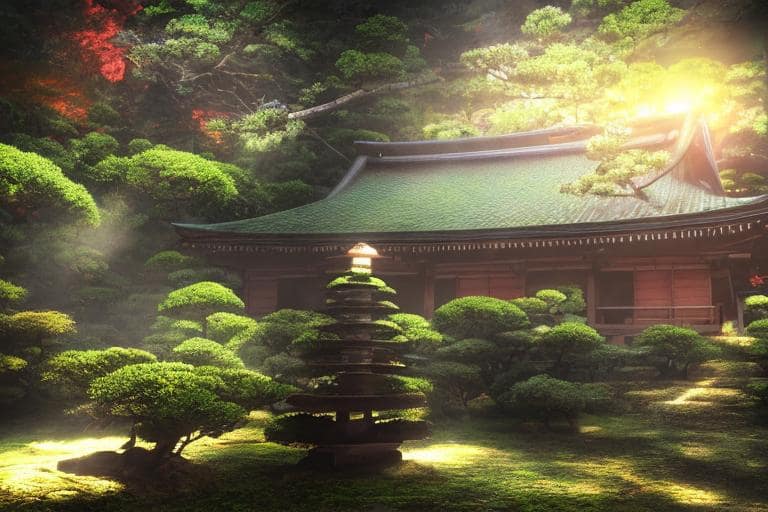
Chiba Tsunetane was a samurai of the late Heian and early Kamakura periods in the 12th century who served as a bushi (military commander) under the Minamoto clan. He was the founder of the Chiba clan and is considered one of the most influential figures in Japanese history.
His military career began at a young age. As a member of the Minamoto clan, he fought in many battles of the Gempei War between the Minamoto and Taira clans. He was eventually elevated to the rank of hatamoto (direct retainer) by Minamoto no Yoritomo and given control of the Chiba region.
In 1192, Tsunetane was tasked with leading an invasion against the Koma clan, which had been causing trouble for Minamoto forces in Kōzuke Province. His successful campaign brought him great honor and recognition from Yoritomo himself, who rewarded him with higher status and new lands in Shimōsa Province.
Tsunetane’s descendants have since become important figures in Japanese history and culture. The Chiba clan produced several shoguns in the Edo period, and one modern descendant is former Prime Minister Junichiro Koizumi.
Youth and training as a samurai
As a native samurai, Mikao Usui enjoyed a classical training. One of them is the training of Japanese martial arts. At that time it was custom to train many disciplines. Therefore, he practiced unarmed defense and also combat with weapons such as sword, stick, halberd, spear and archery on foot and on horseback.
He practiced diligently and honed his skills and technique. He worked with purpose and determination, never giving up even when the odds were stacked against him. He studied the tactics of his opponents in battle and learned to anticipate their moves and counter them. Through his hard training and dedication, he managed to develop the skills he needed to become a master swordsman.
His samurai spirit kept him focused and motivated, pushing him beyond what he thought was possible.
Samurais are not only good fighters but also receive a very good training from the most learned of the country. Therefore, as a boy, he learned to read and write in the Buddhist temple. This brought him into contact with Buddhism and its trainings at a very early age, which paved his spiritual path. So he was not only a warrior but also a Buddhist.
Buddhist monk
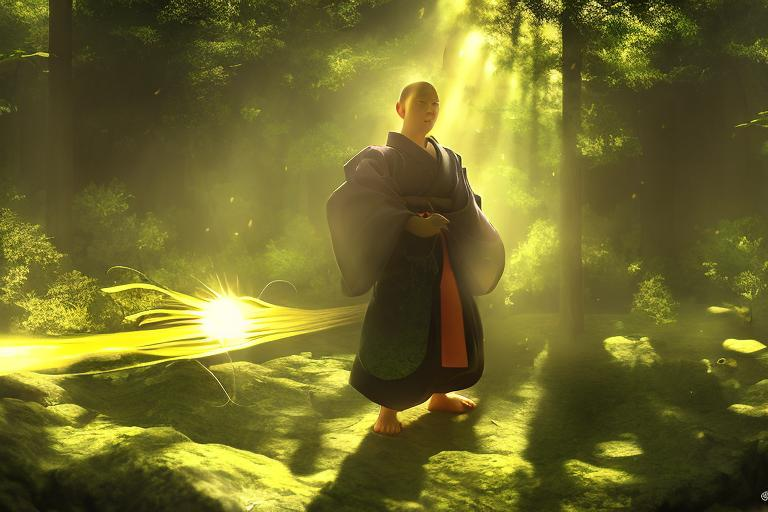
There is a discussion about whether Mikao Usui was a Buddhist monk and if so, which school he belonged to. Some think that he was a Tendai Buddhist because the Kurama temple is associated with the Tendai school. Very popular is also the opinion that he was a Zen monk because he meditated. This view is also held by Hiroshi Doi, the founder of Gendai Reiki, whose ancestors produced some Zen monks. Hyakuten Inamoto, monk of Pure Land Buddhism of the Jodo school and founder of Komyo Reiki sees Mikao Usui more as a Jodo monk because he is buried in a Pure Land Buddha cemetery of Saihoji Temple in Tokyo.
I myself believe that Usui-Sensei was a Shingon monk. This is especially evident in the hidden contents of the Reiki symbols and the Buddhist meditations and rituals, some of which reappear in the Reiki healing method.
The main reason, however, is that all of the Buddhist schools mentioned above ultimately trace their historical roots back to the Shingon school and were only carved out as branches of Shingon over the centuries. Except for the Tendai School – which is much older. It is composed of the Chinese Tendai and Shingon trainings, which were adopted in Japan in the 9th century.
In Japan, on the other hand, this discussion hardly arises among monks who have nothing to do with Reiki, because everyone knows that all schools can be traced back to the same Buddha. In addition, the individual schools complement each other and work together.
From the memorial stone inscription we know that his Buddhist name was Gyôhan. This means that Mikao Usui was a monk. Nothing more is mentioned there and probably for good reason.
Professional career
Originally, in Japan, the career path is predetermined by birth into one of the four social classes. Therefore, Mikao Usui’s profession should have been samurai. But their abolition in Japan in 1876 meant that this was no longer possible. After the Meiji Restoration, the feudal system was abolished as part of efforts to modernize Japan and create a more unified nation.
This led to the following problems for Mikao Usui and thousands of other samurais:
1. loss of social status with all privileges and a respectful approach to them.
2. loss of economic stability: samurai relied on their stipends to support themselves and their families, and with the abolition of the class, these stipends fell away, leaving many in a state of financial insecurity.
3. loss of professional identity: for centuries they had been identified by their profession, which now no longer existed. This left many feeling confused about their purpose in life and lacking direction for the future.
4. loss of military power: with the abolition of the samurai, Japan’s military power was also lost, as they were responsible for defending the country against external threats.
5. difficulties in adapting to new ways of life: Many found it difficult to adapt to modernized Japan, where there was no longer a need for warriors or military power; they were often unable to find new ways to earn a living or gain recognition in society.
Despite all these difficulties, Mikao Usui managed to find his way. This led, due to his erudition and good connections, to jobs as a bag-carrier for well-heeled politicians, and finally to the position of secretary to Shinpei Goto, who became mayor of Tokyo in 1920. These activities enabled him to travel to China and Europe.
But his vision and what his heart burns for was something else. Even as a boy, he was passionate about spirituality and magic and was eager to use it to help others heal. Fortunately for him, there was an upsurge of occult trainings and methods in Japan in the early 1900s.
Spiritual training
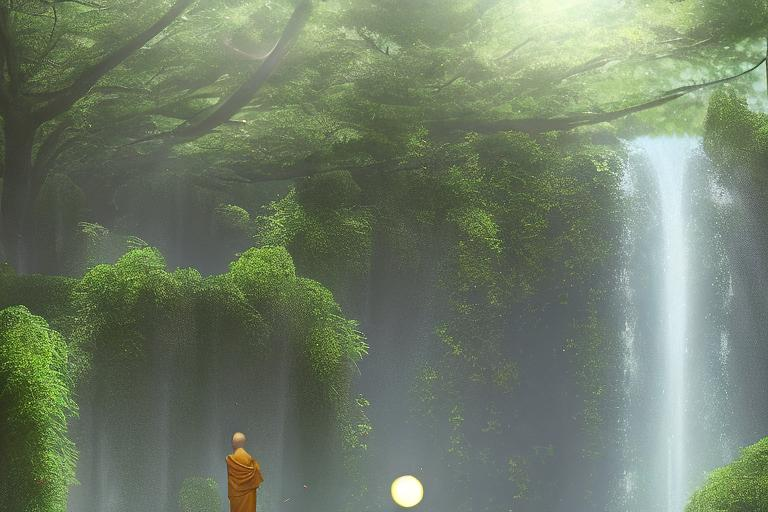
In the course of time, he set up extraordinary things. He was determined to show the world that great things were possible with spiritual power, and no matter how many times he failed, he kept pushing forward. Despite the many failures and humiliations he had to endure, he refused to give up.
With the help of his warrior spirit, he developed a willpower and stamina that got him past difficult obstacles to achieve his goals. So he trained harder and harder to make it.
As a Buddhist monk, he also learned to be mindful and focus on the task at hand without letting any distractions get in the way. He took every opportunity to learn from his peers and from literature and biographies, taking their advice and developing his own strategies for success. He realized that he could achieve great things if he combined knowledge with his own creativity and determination.
Finally, he was able to face any challenge with courage and confidence. Through his determination and perseverance, he was able to overcome any obstacle and became a respected spiritual leader. He showed that with dedication and love for all beings, one can succeed no matter how hard the road. He inspired countless people by his example to stay true to their dreams and never give up.
Thus, he never gave up, eventually achieved his goals and became a respected spiritual master of his time. He was a great inspiration to many and is fondly remembered throughout the world as a leading master of spirituality. His trainings are still passed on and practiced today, bringing clarity and insight to those who seek them.
Mikao Usui believed that the path to enlightenment was not easy, but with perseverance and dedication one could succeed. He spread his message of hope and encouraged others to never give up on their dreams. Despite the challenges he faced in his life, he kept pushing forward and believing in himself until he finally achieved his goals. His legacy lives on today, inspiring people from all walks of life to strive for greatness and never give up.
In this context, it may be of interest to point out that his Buddhist monk name is Gyôhan. Literally translated it means „hoisted sail at dawn“. This means that he endures the darkness of the night, never hesitates, overcomes all obstacles and continues until the sun saves him.
The discovery of Reiki energy 1922
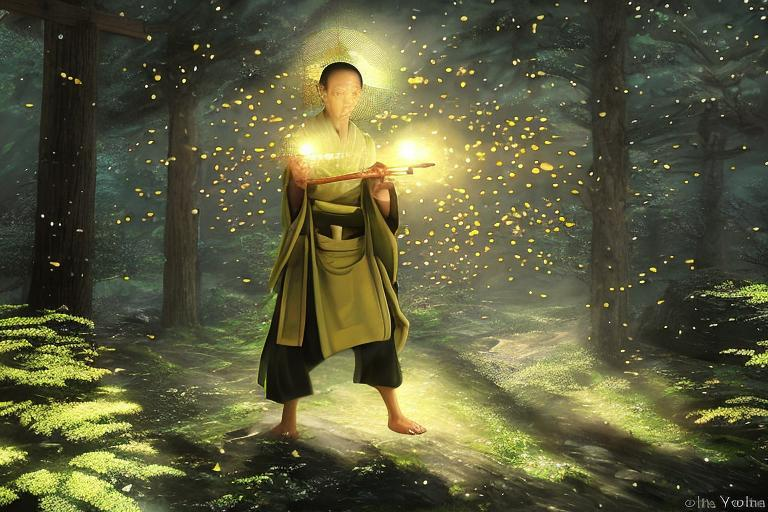
One day he climbed a mountain in the Kurama Mountains to devote himself fully to his practice. He abstained from food and performed hard and laborious ascetic practices. On the night of the 20. or On the 21st day during his 21-day fasting meditation, he felt a tremendous spiritual power above the crown of his head when he saw a strong spiritual light in his head. That was his first contact with the energy and so he became a Reiki channel.
When he descended from the mountain after this enlightenment experience, he stumbled and injured himself. Then he tried this form of energy, which was new to him at the time, on himself and was able to heal himself. At the foot of the mountains, he went to an inn to fortify himself and eat again. The innkeeper wanted to offer him only food for ascetics, but Mikao Usui wanted everything from the menu at once. To the great astonishment of the host, all the food got to him, even though he had fasted for so long. Then the innkeeper brought him his daughter, who had a severe toothache. Mikao Usui transferred the power to the daughter through his hands and it did not take long for the swelling on the cheek to go down. So he could convince himself of the fantastic healing power of Reiki right at the beginning.
This means that at that time he already knew the procedure for healing and treating with energies through the hands. What was new for him here was the type and strength of the energy. Apparently, with this power it was possible to treat relatively fast, that is, much faster than before with own life energy or with such ambient energies, which can be transferred by much practice.
Foundation of the healing method Usui Reiki Ryoho

The years of spiritual practice favored the development of the Master’s life story in science and art, which formed the basis for the development of Usui Reiki Ryoho.
After returning from the Kurama Mountains, where he was initiated into Reiki during his weeks of meditation, contemplation and asceticism, he began to try out his new ability in every conceivable situation.
The word Reiki is now the name of the method itself, originally called Usui Reiki Ryôhô. This means method of natural healing according to Usui. This is not to be confused with the Usui System of Natural Healing from the lineage of Hayashi and Takata. This name comes from the naval officer, disciple of Usui Hayashi and former member of the Usui Reiki Gakkai, as can be seen in a photo on one of his calligraphies.
First successes
When the master tested his achievement on family members, he observed success on the spot. Instead of just doing something good for his family members, he came up with the idea of training people to spread far and wide. As he became comfortable with the idea in the wake of this joyous event, he moved to Aoyama in the Harajuku district in April 1922.
Reiki Academy
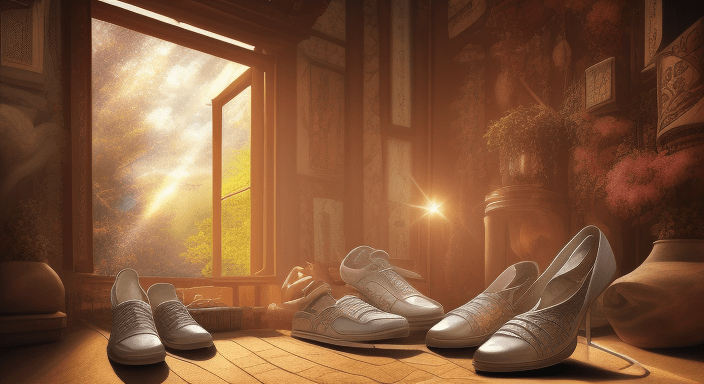
He set up an academy and taught the healing method. He performed Reiki treatments and initiated people. People came from near and far to petition him. Outside always collected a lot of shoes. In Japan, it is customary to take your shoes off outside instead of coming into the hallway first. Therefore, it was visible at any time when someone has a lot of visitors.
The great earthquake
In September of the 12 year (1923), a great earthquake occurred in the Kanto region of Tokyo and Yokohama.
The Great Kanto Earthquake was one of the most devastating earthquakes in Japan’s history, killing an estimated 140,000 people and destroying nearly half of the capital. The quake occurred at 11:58 a.m. on September 1, 1923, and had a magnitude of 7.9 on the Richter scale. It was felt as far away as Osaka and Shikoku.
The earthquake triggered strong tremors that knocked buildings down to the ground and started fires. These fires continued for days and eventually merged into a single firestorm that engulfed both cities. The intense heat caused by this firestorm created what is known as a „fire vortex“ – a phenomenon in which columns of air rise rapidly from the burning area, creating strong winds that further fuel the flames.
The destruction caused by this disaster was immense; entire neighborhoods were reduced to rubble, and tens of thousands were left homeless and injured. Many survivors suffered physical injuries such as broken bones or burns, while others suffered emotional trauma from witnessing so much death and destruction. In addition to the human toll, there was also an economic impact: It is estimated that the damage in the capital alone cost more than 2 billion yen (about $17 million).
In the places where he can make a difference, the master felt the pain in a deep way. At daybreak, he set out and wandered around the city. Regardless of the fact that he could not know what amount he would receive, he treated sufferers with no prospect of payment.
Unexpectedly, he turned to them. The rescue from Gram in the most adverse circumstances is so great that it is unparalleled.
Upswing of his fame
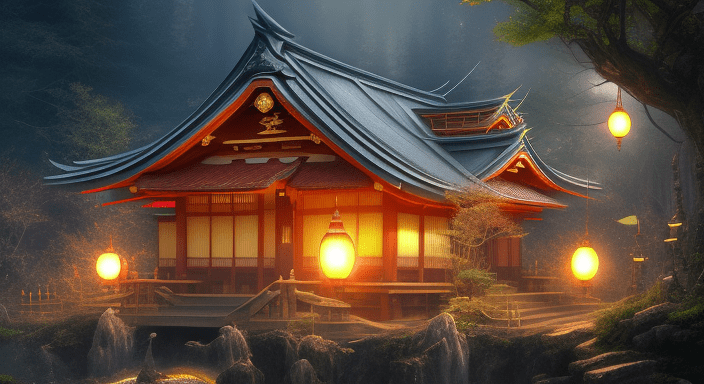
In 1925, after his training hall had become too cramped, he took a divination as an opportunity to build his new dojo outside the city in Nakano. Construction was completed in February of the same year.
Oracle and clairvoyance
To this day, it is a common practice in Japan to ask oracles and psychics for advice when making important decisions. This practice is not as common today as it once was, but it is still a part of traditional culture and beliefs in Japan. In particular, people consult an oracle or medium when they are faced with an important life decision, such as whether to get married, take a job, or move to a new place. Some also seek advice from an oracle or psychic when they feel lost and uncertain about their future. Although this practice has lost popularity in recent years due to the advent of modern technology and scientific knowledge, there are still many who believe in the power of divination rituals and supernatural guidance when making important decisions.
Divination practices in Japan are mostly performed in Buddhist temples and Shinto shrines. The most popular form of fortune telling in Japan is called Fuku-Uri, which translates as „fortune telling by lot.“ In this process, lots with symbols representing different aspects of life such as love, money, career and health are drawn from a container, which is usually made of wood or stone. The practitioner then interprets the results according to the symbol drawn. Other forms of divination include miko (shamanistic) practices such as omikuji (paper divination), satori (clairvoyance), and tsuina (disaster prevention).
As a monk and ascetic, Mikao Usui himself was well versed in the divination art of the chopstick oracle. It is unlikely that Usui, as a monk, practiced the chopstick oracle as part of his practice, but it is believed that he used it for guidance in his life. The chopstick oracle is a form of divination that uses chopsticks to answer questions about the future. The chopsticks are thrown onto a cloth, and their position and orientation are then interpreted by an expert. It is believed that this practice was brought to Japan by Chinese immigrants during the late Edo period.
The spread of the Reiki system
The inscription explains exactly how it came about that Mikao Usui received an esteemed and remarkable reputation. On the one hand, it is his biography and career, and on the other hand, his extraordinary and honorable personality. This includes especially that he never gave up despite many defeats and disregard.
This means that he was already known for his activity in his environment, but before the gift of Reiki he was not particularly successful. He may have been known for his perseverance and activity, but he had yet to achieve any tangible success.
When he was able to gain access to Reiki, it increased the effectiveness of his energy healing and his radiance through his luminous aura.
This led to the fact that from the very beginning, people from all over the world noticed that he was spreading a method for the improvement of body and soul. Even when he sent them home, they asked him in unison for instruction and healing treatment.
As his reputation spread in the area, he became a man who was not infrequently invited because of his reputation. The master accepted these prompts. He went to Kure, then made his way to Hiroshima, and finally arrived in Saga.
In Saga, Mikao Usui was received with great hospitality by the people of the town. He was invited to lecture and give courses on his healing method. He also held sessions in which he treated the sick and injured.
People from everywhere sought his treatment and many were healed. Usui’s fame spread far beyond Saga, and soon people from all over Japan were coming to him to experience his healing power firsthand.
Usui spent much time training his students and treating those who needed it. His reputation spread rapidly and many people traveled to experience Usui’s healing power firsthand. Even today there are a number of practitioners who can trace their lineage directly back to Mikao Usui.
The master died on March 9, 1926 at the inn in Fukuyama. He had been ill with strokes for some time before his death, and it is believed that he contracted an illness while in Fukuyama. The exact cause of death was never determined, but it is believed to have been complications of a respiratory infection.
At the time of his death, Mikao Usui had a large following of disciples. He was known as a spiritual mentor who taught meditation and self-healing practices. After his death, many of his followers began practicing to channel Usui’s trainings and pass them on to others. These students are believed to have been instrumental in spreading Usui’s legacy throughout Japan and the world. A year after his death, his most trusted disciples from the samurai rank erected a monument at his grave in Saihoji Temple near Tokyo.
More than 2000 students were trained by Master Usui, among them nearly 20 received the Master level. Those among them, who were his most outstanding students in the capital area, organize Reiki meetings to continue the significant achievement. And likewise those from the surrounding area initiate many into this method. In this way, many more people could be initiated into Reiki.
Usui Reiki Ryoho Gakkai
The Usui Reiki Ryoho Gakkai is a non-profit organization and lodge founded by Mikao Usui in Japan in 1926. She is dedicated to the practice, training and research of Usui Reiki Ryoho, an energy healing system developed by Mikao Usui. The organization is based on the principles of self-healing, peace and harmony with nature. The main goal of the Gakkai is to help people improve their physical, mental and spiritual well-being through Usui Reiki Ryoho.
Chujiro Hayashi (1880-1940) was a Japanese naval officer and Reiki master, direct disciple of Usui, and eventually became the first president of the original Usui Reiki Ryoho Gakkai. He taught many students in Japan and around the world and introduced many new techniques into the Reiki practice.
In addition, he revolutionized in the course of time the initiation methodology to the effect that through the four initiations into level 1, the Reiki power remained for a lifetime. He is credited with developing the modern form of Usui Shiki Ryoho (known as the Usui System of Natural Healing and literally translated Method of Natural Healing in the style of Usui) and Jikiden Reiki (a more traditional form in which Reiju is used as an initiation). Thus, he has contributed significantly to the spread in the world.
The contents of the spiritual method
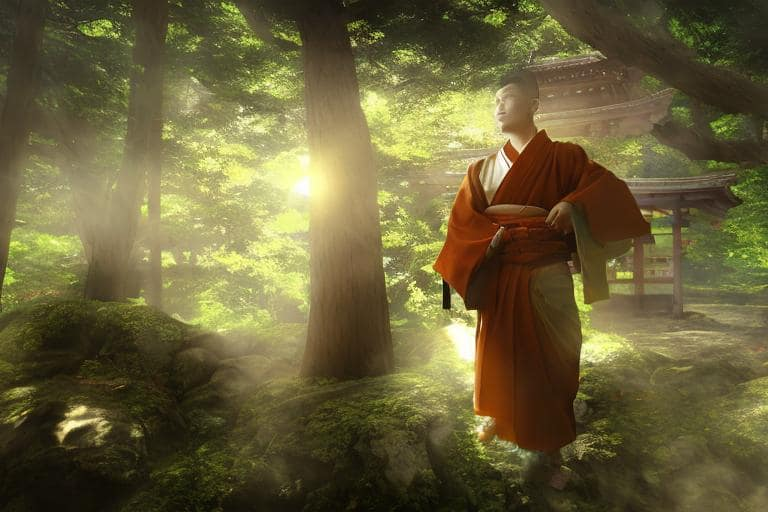
Mikao Usui taught them the basics of meditation, the power of positive thinking, and how to use mental healing to regulate physical and emotional states. He taught them about nutrition and showed them how to eat a balanced diet for optimal health. As he continued to coach his students, he noticed that many of them were suffering from physical ailments. He began to develop the original hand positions based on Western and traditional Chinese medicine and acupuncture, as well as herbal remedies.
He also incorporated exercises to improve posture and balance, as well as breathing techniques for relaxation – a practice focused on improving health through breath work, meditation, gentle movement and self-care.
Therefore, it is not surprising that Mikao Usui is known in Japan as one of the most famous qigong masters of the early 20th century. Qigong is still practiced in many parts of the world today and has gained popularity in recent years due to its focus on holistic health care. Qigong continues to be used by practitioners around the world to promote well-being by relaxing and improving the flow of energy in the body.
Usui Teate Treatment
Usui Teate is a hand laying technique with treatment positions developed by Mikao Usui and used in the Reiki healing method. In doing so, the practitioner places their hands lightly on or near the recipient’s body and allows the Reiki energy to flow through them. This technique can be used for physical and mental healing, but also for emotional and spiritual healing.
It is said that energy flows through all living things and can be used to promote healing and well-being. During a Usui Teate session, the Reiki therapist uses his or her hands to direct Reiki energies into the person being treated so that they flow naturally through the body, helping to restore balance and harmony.
The main goal of Usui Teate is to remove blockages in a person’s energy system that may cause physical or emotional discomfort. In some cases, this technique can also be used to reduce stress, improve mental clarity, regulate anxiety, and strengthen spiritual connection.
When performing Usui Teate, it is customary to wash your hands before and after each session. It is also important to keep an open mind and heart when engaging in this form of healing.
Usui Do
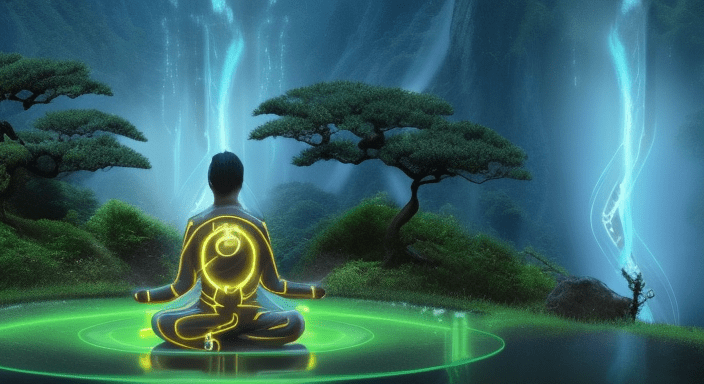
This is the original Reiki – the training as it was called by his disciples Usui Do. This means the way of Mikao Usui. Reiki is the name given to Usui’s system by his disciple Hayashi, who further developed it after Mikao Usui’s death in 1926.
Usui’s trainings were an amalgamation of various healing systems and meditations he had learned from Shingon Buddhist monks, Taoists, and Shinto priests. He combined these trainings with animal magnetism and with his own spiritual insights to create a Reiki system of healing.
Students were taught meditation and mindfulness exercises to cultivate awareness of the natural life energy, as well as techniques for channeling and directing that energy.
Mikao Usui also taught his students the Five Principles (or tenets), known in Germany as the precepts.
The goal of Usui Do is the attainment of enlightenment. However, unlike religion, there was no belief system attached to it. Although it was actually about enlightenment, the healing effects that the students achieved were a gratifying side effect.
What distinguishes Usui-Do from other methods is the use of reiju , or attunements, to remind students of their spiritual connection. Apparently, all of Mikao Usui’s disciples have received reiju and the five rains of life. Those with a deeper interest became devoted disciples. There seems to have been no distinction between clients and students initially. This changed in 1917, when people began to seek out Mikao Usui for various purposes. Some sought healing, others spiritual trainings.
Role model for Reiki masters
From the point of view of his most important disciples, Usui-Sensei was compared to the models of old masters. And that is exactly how the text carved into the memorial stone begins:
„It is said that if you build up the true training of spiritual exercises regularly, you will achieve the inner wealth.
It is said that the meritorious deed is to spread the way of training, initiating and redeeming others from their suffering to happiness by holding events outside in every conceivable place.
The dignity of a master coacher can be attained through merits of great and long experience, as well as superior sincerity.
Since ancient times, the honorable learned sages and philosophers have handed down knowledgeable traditions. Probably he was like one of all those who started a new school.
The spiritual life energy of the universe can be traced back to masters like Mikao Usui and also those who have become masters more recently.“
The essence of the master
The master was modest and gentle in personality. He was a kind, compassionate coacher who believed in leading by example and guiding his students with love and respect. He was known for his humility and wisdom and had a deep understanding of the spiritual path. He was committed to helping people reach their highest potential and develop.
He based his training on the five principles from the Buddhist secret trainings of the Shingon School, which he believed could help people heal physically, mentally, emotionally and spiritually. With the help of practical study of Buddhist, Daoist, Tantric and Shinto wisdom trainings, he developed the Reiki healing method.
Mikao Usui became known for his dedication and commitment to his practice. He was a devoted practitioner of qigong, meditation and healing. Through his practice, he developed a strong physique that was admired by many. He often dressed simply and did not care about his appearance, but his physical strength and endurance were undeniable.
He was a man of great inner strength and resilience. He was patient, even in difficult situations, and he always took the time to prepare thoroughly before making important decisions. He had a deep understanding that planning and thoughtfulness are key to making wise decisions.
He had a natural talent for craftsmanship.
He had a keen interest in reading and often studied biographies based on historical documents.
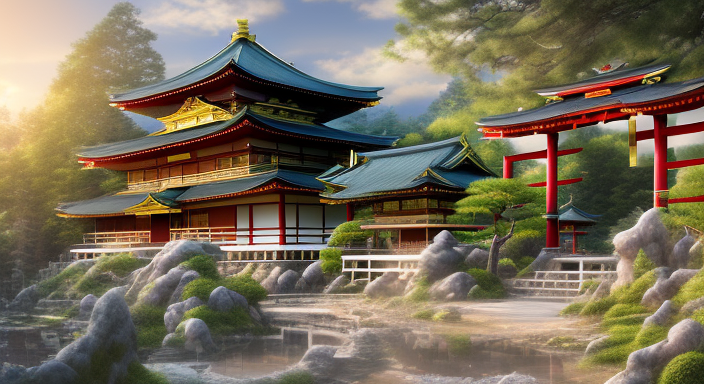
Mikao Usui was a highly coachd man, and his studies included medical literature as well as Buddhist Sûtras and sacred texts of Christianity. He also studied philosophy, psychology and religion to gain a deeper understanding of the human condition and the energy that flows through the body. During his life, he traveled extensively, visiting shrines and temples throughout Japan to deepen his knowledge of healing practices. Based on these experiences, Mikao Usui developed his unique healing system, which he named the Reihô spiritual method. This system is based on ancient trainings combined with modern Reiki techniques to help people heal emotionally, spiritually and physically.
He was particularly knowledgeable about symbols, talismans, and spells that could be used to influence supernatural forces. He was also a master at using incantations and rituals to invoke these powerful forces for healing and protection. With his knowledge, he could help others understand the mysteries of the invisible world. He used magical artifacts like oracle wands for fortune telling and predicting the future. He even developed his own unique form of facial diagnosis that allowed him to discern a person’s character through subtle facial expressions. His methods were so effective that many believed he had supernatural powers himself.
He was also an excellent coacher who passed on his understanding of Reiki to many students over the years. Mikao Usui taught Reiki as a path to self-improvement, focusing on the development of physical and mental well-being.
Usui’s Message for Practitioners and Masters
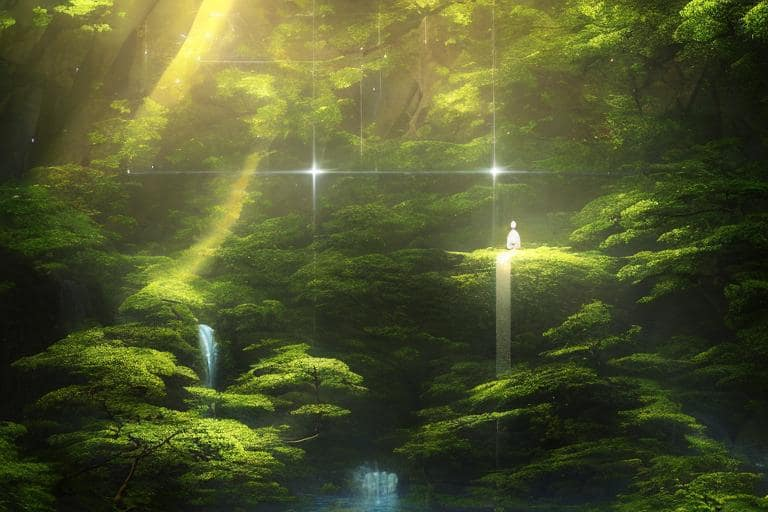
The inscription of the memorial stone also informs about how Mikao Usui himself saw his method, what it is for and what it is not for. He even made a list of priorities, which shows that it is not a pure healing method but rather a master path.
In retrospect, his spiritual approach to the method shows that it should not be limited to curing disease and bad behavior. The key point is that our innate supernatural gifts should serve as the foundation that guides the practitioner to train to perfect one’s soul, maintain one’s physical well-being, and live an abundant life.
Practitioners should follow the philosophy of Meiji-Tennô when training the method. This refers to a radio address by the Tenno that has not lost any of its relevance to this day.
Dealing with the Reiki precepts
As a daily practice, it is good to contemplatively recite the Five precepts (Japanese Gokai) every morning and evening with attention in the spiritual heart (4th major chakra). This practice helps to incorporate optimistic ideas and goodwill toward all people into regular routines, often freeing oneself from negative views and feelings. This is possible because the focus is directed to the positive. Why fight the darkness when you can just turn on the light.
If you kneel down, turn your thoughts inward, breathe in and out for a long time, put your hands together in front of your chest, and intonate the life principles at dawn and dusk, you will develop a clear and healthy mind through consistent and sincere practice.
The way of the ancient sages
The path of spiritual power is a path of self-development and growth. Mikao Usui borrows from the trainings of the saints and sages of ancient times and especially emphasizes the truthfulness and importance of this approach.
It’s about learning how to connect with your own inner wisdom, understanding the power of the mind, cultivating an attitude of love and compassion, and connecting with higher energies. This path requires dedication, commitment and effort to master. It also requires patience and perseverance, as well as a willingness to constantly grow and develop. Through this practice of spiritual growth, one can experience a deep sense of peace, joy, fulfillment and harmony within oneself.
The master way to the championship
In the way of Mikao Usui (Usui Do), the Gokai is said to be compared to a secret method and spiritual remedy of innumerable diseases, inviting good fortune. Ultimately, they can serve as energy medicine for countless diseases and lead to greater well-being in all areas of life if these characteristic properties are made known in all places.
This requires consistent dedication and a willingness to share the wisdom and experiences with others so they can benefit. It is also important to recognize and appreciate the differences between self and others in order to create an atmosphere of respect and understanding. With this, you can ultimately develop the tools you need to achieve true happiness.
Masters should not feel that they are entitled to a higher level of respect or special treatment just because they are Reiki Masters. You should not feel exalted or superior to others, much less peddle it. All people should be treated with the same respect and kindness, regardless of their beliefs or practices.
Master level training
The Master Path is about finding a way to communicate spiritual trainings in an understandable and accessible way. It takes creativity and skill to express complex ideas in an interesting and engaging way that resonates with the audience. It also requires an understanding of the culture, values and beliefs of the people you are trying to reach. In this way, it is possible to make meaningful connections between spirituality and daily life, which can lead to a better understanding and appreciation of spirituality.
The reason for this is to make the practice widely known. This change in outlook not only reflects the progress of the times in recent years of Japan.
The healing method is designed to appeal to people of different backgrounds, beliefs and lifestyles. It is a self-help way to better understand their inner self and develop their spiritual practices. The method is designed to be accessible to all, regardless of age, gender or religious affiliation. It should also be flexible enough to be adapted and customized to individual needs. In this way, this practice can become more meaningful and useful for each person.
Usui’s wishes for the future
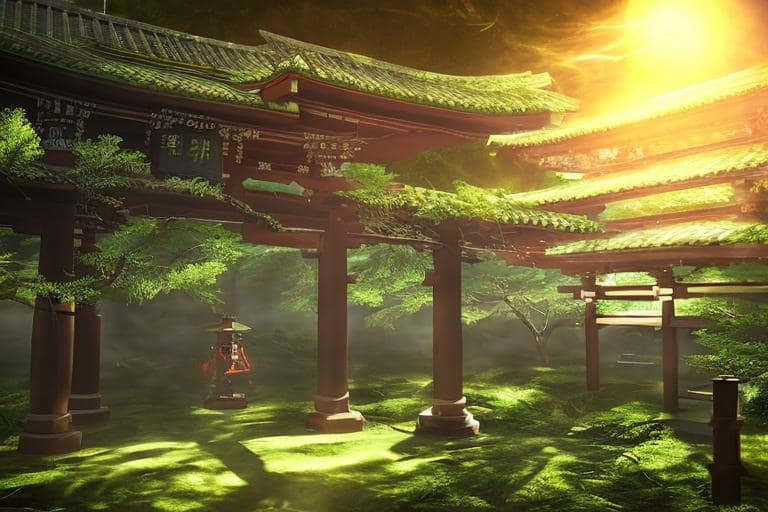
His greatest desire is to spread this spiritual method in an open way, to help much those in need of help with this way of virtue to be protected and the will of the heart.
However, the Reiki method is not only about successfully curing difficult-to-cure ailments such as dejection and chronic illnesses. Much more important is the development of supersensible abilities of natural endowment through spiritual exercises. Because this promotes personal and spiritual growth and helps to achieve a life of inner and outer wealth.
Even though Mikao Usui is no longer with us, his trainings live on and continue to be a source of healing and spiritual guidance for many. It is his wish that the spiritual method should be spread as a guide for all ages of the world.
